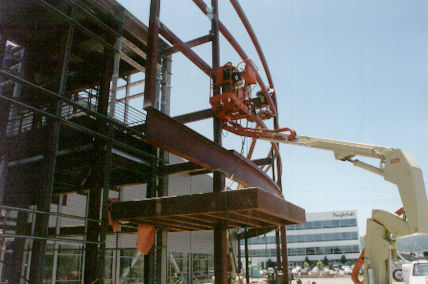PeopleSoft Brings Bandwidth Home
PeopleSoft Brings Bandwidth Home

"PeoplePipes" Bring High Speed Computer Access to Employee's Homes
In an effort to both take advantage of new technologies and cut telecommuting costs, PeopleSoft has unveiled "PeoplePipes," a new program which will allow employees high-speed access from their home PCs to PeopleSoft's network.
"We're an early adapter of new technology," explains Neil Hennessy, director of global network services. "We live and breathe on our machines, and if you can't get to your e-mail or the systems that support you, you really don't work for PeopleSoft."
A Taste of Technology
The company will employ what Hennessy calls "a smorgasbord of technologies" in the new program. "The primary one we're aimed at at the moment is DSL (digital subscriber lines)," he says.
DSL allows high-speed data communication over existing phone lines and is rapidly becoming the method of choice for small businesses and individuals. Unlike technologies like ISDN, which are billed according to usage, DSL connections have a fixed price that's "much cheaper," according to Hennessy.
While DSL is the company's first choice for home office connectivity, it's not available everywhere just yet.
"We may be using cable modems in some areas and we may be using satellite (access), or in some cases we may have to stick with ISDN," he adds. "We've rolled out this area first because of the availability of DSL here, and we're working with vendors for the rest of the U.S. and then we'll go to Europe and the Pacific."
Pacific Bell Plays a Part
PeopleSoft will be working with Pacific Bell and other DSL and cable modem providers. In addition, Pacific Bell Network Integration (PBNI) will play a key role in the implementation of the PeoplePipes program. PBNI will oversee installation of the new lines as well as provide technical support for basic network issues.
A Productivity Boost
Ultimately, Hennessy sees a boost in productivity as a result of the program.
"People expect high-speed access based on what they use in the office," he adds. "We want to provide higher speed access for quality of life so people can get on and get off quicker."
Photo: PeoplePipes will allow high-speed access to PeopleSoft's new data center, currently under construction.
Also in this issue...
- Remedy, AmEx Team for Purchasing Power
- PeopleSoft Brings Bandwidth Home
- Business Bits
- Executive Profile - Jeanette Price and Annabelle Rodrigues, Amelia's Deli/Bistro
- Hacienda Tenants Offered High Speed Net Access at a Discount
- From Fast Food to Haute Cuisine, Hacienda has a Full Spectrum of Dining Opportunities
- Hacienda CEO Gives Flight to AngelWings
- Hacienda Commuters Have a Guaranteed Ride Home
- Hacienda Index




